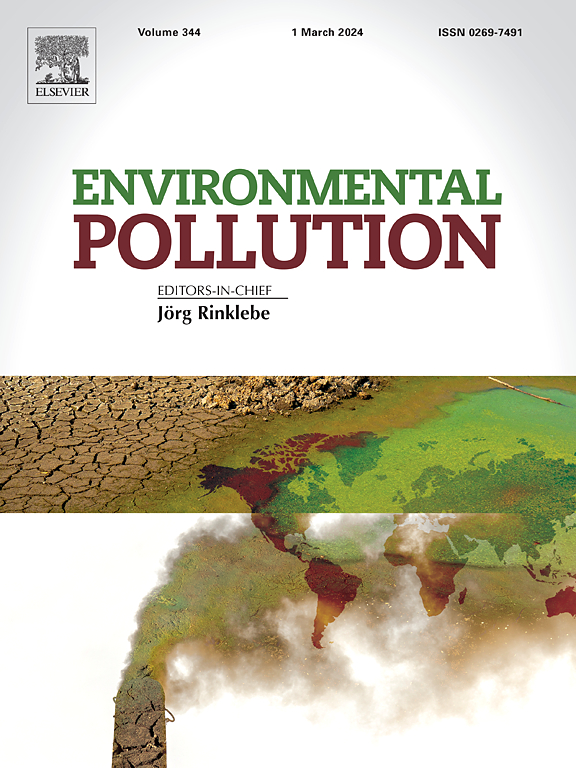Fate of antibiotic resistance genes under different wastewater treatments and environmental conditions in an Algerian watershed
IF 7.6
2区 环境科学与生态学
Q1 ENVIRONMENTAL SCIENCES
引用次数: 0
Abstract
In recent decades, antibiotic resistance has become a major health threat. This study evaluates the efficiency of two wastewater treatment plants (WWTP), conventional activated sludge and advanced filtration-based Enviro-Septic, for removing antibiotic resistance genes (ARGs) and their prevalence in an Algerian watershed. Thirty-five wastewater and 122 river samples were collected. Sampling covered a 50 km transect, from a low-pollution site to a water reservoir, at six sites. The study analyzed different fecal indicators (E. coli (EC), spores of sulfite-reducing clostridia (SRC), somatic coliphages (SOMCPH)), CrAssphage (CrAssPH)), and three ARGs (blaTEM, tetW, and sul1). Mean concentrations in raw sewage from the conventional and Enviro-Septic WWTPs were ∼7.1 and 6.4 log10 (CFU/100 ml) for EC, 6.2 log10 (PFU or CFU)/100 ml for SOMCPH and SRC in both treatments, and ∼7.5 and 5.2 for CrAssPH, respectively. The conventional WWTP achieved reductions of ∼4 log10 for EC and SOMCPH, 3.5 log10 for CrAssPH, and 1 log10 for SRC. The Enviro-Septic system showed similar efficacy for EC and SRC but lower for SOMCPH (2.8 log10) and CrAssPH (2.5 log10). The mean concentrations (log10 GC/100 ml) of ARGs in raw sewage of the conventional and the Enviro-Septic WWTP were 8.6 and 7.3 for tetW, 9.4 and 8.1 for sul1, 8.4 and 6.3 for blaTEM, respectively. Both treatments achieved reductions of 2.9–3 log10 for all ARGs. All river samples tested positive for the three ARGs, with lower concentrations at less fecally polluted sites, showing a reduction of up to 4 log10. Strong correlations (p < 0.05) were observed between culturable indicators, CrAssPH, and ARGs (ρ 0.58–0.96), indicating a strong association between ARGs and human fecal contamination, although other environmental sources cannot be ruled out. This study provides insights into ARG dynamics and supports strategies to mitigate their spread, and protect public health.


求助全文
约1分钟内获得全文
求助全文
来源期刊

Environmental Pollution
环境科学-环境科学
CiteScore
16.00
自引率
6.70%
发文量
2082
审稿时长
2.9 months
期刊介绍:
Environmental Pollution is an international peer-reviewed journal that publishes high-quality research papers and review articles covering all aspects of environmental pollution and its impacts on ecosystems and human health.
Subject areas include, but are not limited to:
• Sources and occurrences of pollutants that are clearly defined and measured in environmental compartments, food and food-related items, and human bodies;
• Interlinks between contaminant exposure and biological, ecological, and human health effects, including those of climate change;
• Contaminants of emerging concerns (including but not limited to antibiotic resistant microorganisms or genes, microplastics/nanoplastics, electronic wastes, light, and noise) and/or their biological, ecological, or human health effects;
• Laboratory and field studies on the remediation/mitigation of environmental pollution via new techniques and with clear links to biological, ecological, or human health effects;
• Modeling of pollution processes, patterns, or trends that is of clear environmental and/or human health interest;
• New techniques that measure and examine environmental occurrences, transport, behavior, and effects of pollutants within the environment or the laboratory, provided that they can be clearly used to address problems within regional or global environmental compartments.
 求助内容:
求助内容: 应助结果提醒方式:
应助结果提醒方式:


